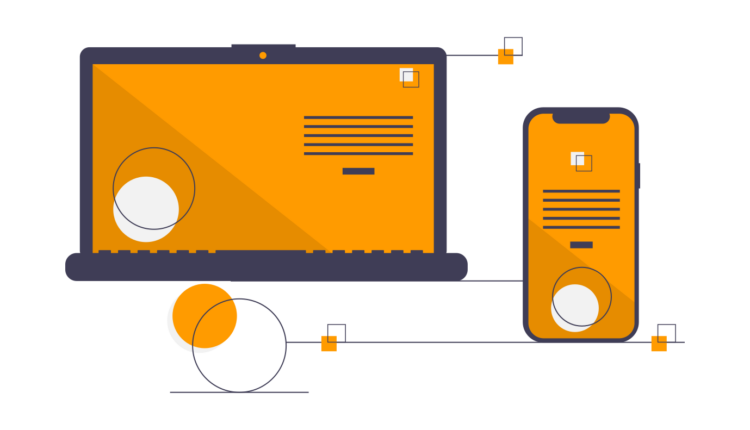In the world of digital advertising, a demand-side platform, or DSP, is a vital tool for marketers. It allows them to acquire digital ad space across several channels, target specific audiences, and optimize campaigns in real-time. This blog will clarify the complexity of DSPs, revealing their function in digital advertising and how they work to bridge the gap between advertisers and publishers.
What is a Demand Side Platform?
A demand-side platform is a tool that marketers utilize to purchase digital ad space. It acts as a platform for publishers to gain access to numerous types of ad inventory, including mobile, search, and video. DSPs also manage real-time bidding for advertisers and keep them up to know on upcoming auctions by sending information.
How Demand-Side Platforms Benefit Publishers?
Publishers rely on DSPs because they connect them with a large number of potential clients and manage real-time bidding on their behalf. They also offer valuable audience data insights, such as demographics and interests, that can be used to improve ad targeting and earn revenue.
Why Do Advertisers Need Demand Side Platforms?
Previously, publishers and advertisers would personally negotiate partnerships, which was time-consuming and not always easy. This is where DSPs, supply-side platforms (SSPs), and ad exchanges come in. They simplify the process, ensuring that advertisers get the most out of their campaigns and publishers profit the most.
Explaining How Does a DSP Work?
DSPs play a significant role in the advertising ecosystem by bidding on behalf of advertisers in real-time auctions. They use algorithms to determine the best bid price based on the campaign’s goals and targeting. The entire process, from a consumer clicking on a website to an ad appearing on their screen, takes milliseconds.
What Are the Main Components of a DSP?
DSPs are composed of numerous components that function in tandem to provide marketers with a comprehensive solution. Among the features include a user interface, ad exchange integration, real-time bidding, data management platforms (DMP), reporting and analytics, and targeting capabilities.
Types of Demand-Side Platforms
There are two sorts of demand-side platforms: self-serve and full-service. The former allowed advertisers to control all ad operations alone, whilst the latter outsourced authority to an account manager, making it more suitable for larger corporations.
Pros and Cons of a Demand-Side Platform
Pros
1. Improved Targeting: DSPs enable advertisers to focus on valuable users with high conversion rates by providing granular campaign targeting.
2. Better Campaign Management: Algorithms are utilized to prioritize the advertiser’s demand and look for appropriate inventory.
3. Access to a Diverse Inventory: DSPs provide advertisers with a steady flow of inventory by maintaining links with multiple ad exchanges.
4. Expert Assistance: They provide support personnel to aid advertising with technological difficulties or other problems.
5. Saves Time and Effort: Because DSPs do the heavy lifting of selecting inventory and delivering relevant ads, advertisers can concentrate on campaign tactics and business growth.
Cons
1. Complexity: Managing a DSP and a product marketing plan can be tough for advertisers, especially when it comes to putting up targeted campaigns.
2. Expensive for Small Marketers: DSPs require a fee for their services, which may be prohibitively expensive for small-budget marketers.
The Difference Between DSP and SSP
DSPs and SSPs are essentially interchangeable terms. SSPs allow publishers to sell inventory to buyers in real-time, whereas DSPs allow buyers to acquire ad inventory in real-time. DSPs are mostly used by advertisers, whereas SSPs are used by publishers.
What’s the Difference Between Ad Networks and Demand-Side Platforms?
Ad networks act as intermediaries between advertisers and publishers, making it easier for publishers to sell ad space and marketers to purchase it. DSPs, on the other hand, are more sophisticated, using data and technology to help advertisers target specific populations and optimize ad campaigns in real-time.
What Kind of User Data Do DSPs Employ for Targeting and Bidding?
Using a variety of data sources, DSPs develop effective tactics and bid optimization methodologies. They collect statistics on campaign efficacy, allow marketers to import current user data, and purchase data from third-party brokers to build new audience groupings.
Frequently Asked Questions
Q1. What is a Demand-Side Platform in Simple Words?
Ans: A demand-side platform is a piece of technology that allows advertisers to acquire digital ad space across many platforms while harnessing data to target specific demographics and optimize campaigns in real time.
Q2. What is a Demand-Side Platform vs a Supply-Side Platform?
Ans: Advertisers purchase digital ad space through demand-side platforms (DSPs), while publishers provide ad space through supply-side platforms (SSPs).
Q3. Is Google a Demand-Side Platform?
Ans: Google Display & Video 360 (formerly DoubleClick Bid Manager) is a demand-side tool that allows advertisers to buy digital ad space across many channels by leveraging advanced targeting and optimization capabilities.


